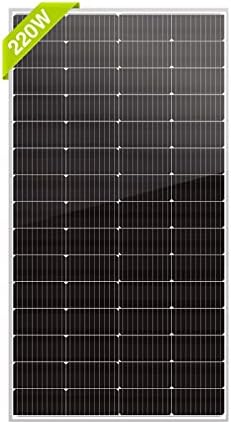# Harnessing the Sun: Your Ultimate Guide to Solar Panels
Imagine waking up to the soft glow of sunlight streaming through your window, illuminating your off-grid cabin. The sounds of nature fill the air, and you step outside to find your solar panels basking in the morning light, silently powering your home. It’s a serene morning routine that has transformed my life, enabling me to enjoy nature while maintaining modern comforts. Solar panels have become more than just a source of energy; they’ve become my allies in achieving sustainable living and independence.
## Why Go Solar?
### Embrace Independence
In this era, energy independence has never been more appealing. Whether you’re an adventurous spirit living in a remote cabin or someone eager to reduce reliance on utility companies, solar panels provide the freedom to generate your own electricity. Not only do they harness sunlight, a renewable resource, but they also buffer you against fluctuating energy prices and geopolitical uncertainties.
### Contribute to Sustainability
Transitioning to solar energy is a giant leap towards a sustainable lifestyle. By harnessing the sun’s power, you’re reducing your carbon footprint and playing an important role in fighting climate change. Each kilowatt-hour you generate is a step toward a cleaner planet, helping to minimize air and water pollution typically associated with fossil fuels.
### Long-Term Savings
While the initial investment in solar technology can seem daunting, the long-term savings are hard to ignore. With the right system, households can drastically cut their electricity bills, sometimes even eliminating them altogether. When properly maintained, solar panels typically last 25 years or more, which translates into years of savings after the upfront costs are recouped.
## Types of Solar Panels
Understanding the different types of solar panels can help you make an informed decision. Here are the main types:
### Monocrystalline Solar Panels
Made from a single crystal structure, these panels are efficient and space-saving, making them ideal for a variety of applications. They tend to have the highest power output, but they also come with a premium price tag.
### Polycrystalline Solar Panels
Created from multiple crystal structures, these panels are generally less expensive and have a lower efficiency compared to monocrystalline panels. They are a great choice if you have ample space and are budget-conscious.
### Thin-Film Solar Panels
These ultra-lightweight panels are flexible and can be mounted on various surfaces. Although they have lower efficiency ratings, they are more affordable and can be a good option for specific installations.
## How Solar Panels Work
At its core, solar panel technology relies on photovoltaics (PV), which convert sunlight into electricity. Here’s a simplified step-by-step process:
1. **Absorption of Sunlight**: When sunlight hits the solar panel, it excites electrons in the PV cells, creating an electric current.
2. **Conversion to Usable Electricity**: This direct current (DC) electricity is then sent to an inverter, where it’s converted to alternating current (AC) electricity, making it compatible with household appliances.
3. **Powering Your Home**: The AC electricity powers your devices and appliances. Any extra energy can either be stored in batteries or sent back to the grid for credit in a process known as net metering.
## Choosing the Right Solar System
### Assess Your Energy Needs
The first step is understanding your consumption. Review your utility bills to find your average monthly electricity usage in kilowatt-hours (kWh). This will help you gauge the size of the solar system you’ll need.
### Look for Quality
When selecting solar panels, aim for products with a good track record. Look for brands that offer warranties—typically 25 years for performance and around 10 years for workmanship. Research customer reviews and performance metrics to ensure reliability.
### Consider Incentives
Many local and federal programs offer incentives for installing solar systems, such as tax credits, rebates, and grants. Be sure to explore these options to help offset initial costs.
## Installation Options
### DIY vs. Professional Installation
If you’re handy and want to save some money, you might consider a DIY solar panel installation. However, having a professional install your system can assure you that it meets local codes and is optimally placed for maximum sunlight exposure.
### Optimize Panel Placement
The orientation and angle of your solar panels can significantly impact their efficiency. Ideally, they should face true south at a tilt that maximizes exposure to the sun. If your roof isn’t suitable, ground mounts can be an effective alternative.
## Maintenance Tips for Longevity
1. **Regular Cleaning**: Dust, leaves, and snow can block sunlight. Clean your panels every few months to keep them performing optimally.
2. **Monitor Performance**: Use a Solar Monitoring System to track your energy production. If you notice dips in performance, it might indicate a need for maintenance.
3. **Check Wiring & Connections**: Inspect for any wear and tear, frayed wires, or loose connections, which can affect performance or even become safety hazards.
## Pro Tips for Going Solar
1. **Energy Efficiency First**: Before investing in solar panels, consider improving your home’s energy efficiency. This will reduce your consumption and allow you to install a smaller solar system.
2. **Investigate Battery Options**: Storing excess energy can help power your home during cloudy days or at night. Look into battery systems to maximize your solar investment.
3. **Stay Updated on Technology**: The solar industry is constantly evolving. Keep an eye on advancements in solar technology that could enhance your system’s efficiency or cost-effectiveness.
## Challenges and Considerations
While solar energy is a fantastic option, it’s essential to acknowledge some challenges:
### Initial Costs
The upfront costs can be a hurdle, even with possible incentives. Assess your budget and look for ways to finance your solar project, such as loans or leasing options.
### Weather Dependency
Solar panels generate less energy on cloudy or rainy days. A hybrid system or battery storage can be great for ensuring reliability during less sunny weather.
### Space Limitations
If you live in an urban area with limited rooftop space, consider alternatives like community solar arrays or ground-mounted systems, where local laws permit.
## The Future of Solar Energy
The future of solar energy looks bright! As technology advances and costs decrease, we can expect more innovative solutions that make it even easier for households to tap into solar energy. Advanced battery technologies, smart panels, and improved energy efficiency will help more people enjoy the benefits of solar power, making sustainable living a reality for everyone.
### Conclusion
Harnessing solar energy is not just for those living off the grid; it’s an empowering step anyone can take toward a more sustainable and independent lifestyle. With the right knowledge, preparation, and resources, you can efficiently harness the power of the sun and make a positive impact on your wallet and the environment. So, take a leap! Dive into the world of solar panels, and you might just find the energy independence you’ve been searching for. The sun is shining—let’s make the most of it!



